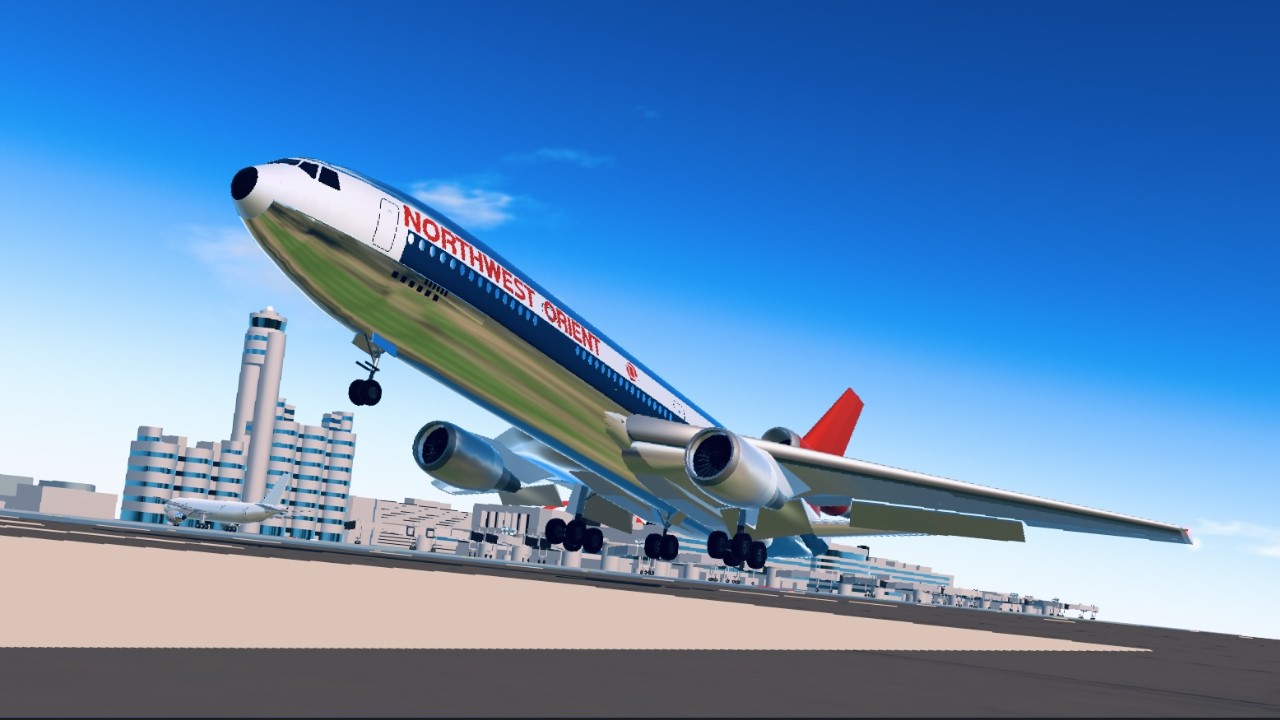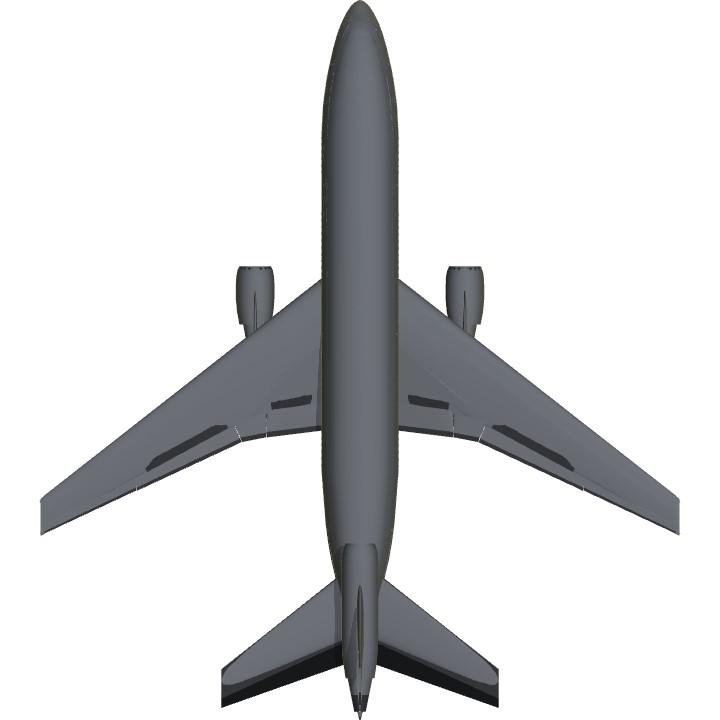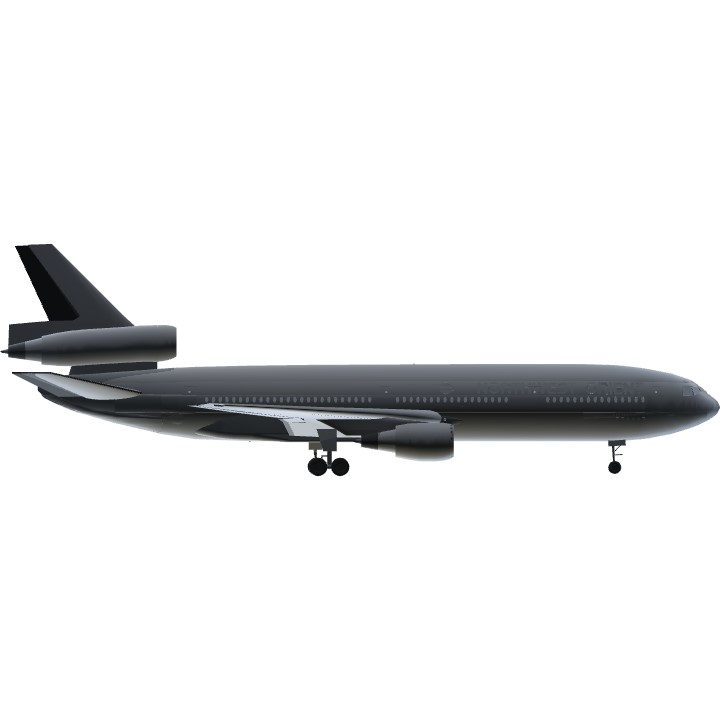Please enjoy!

Special thanks to Chillybaconface
This aircraft is based on his DC-10-30 with a Northwest Airlines paint scheme.

Control
The main operation is similar to Chillybaconface's DC-10
Vtol down:Flap
Trim up &down:minute attitude control
2:Front & Middle Lights
3:Reverse
4:Airbrakes
5:Gyro
7:Night mode

History
While Northwest’s 747 fleet in the early 1970s was busy plying the Pacific, its 707-320 passenger fleet was relegated to domestic duties where its range capability was wasted – and its capacity was too close to new 727-200s. Yet NWA had many domestic sectors that needed something with more capacity than Boeing’s narrowbodies, but not as much as a new 747.
Douglas’ DC-10 offered the step in capacity (40 First Class + 196 Economy Class seats, plus containerized cargo) between the 727 and 747 that Northwest wanted for routes such as Seattle-Spokane-Minneapolis-Chicago-Atlanta-Miami but also the legs to run Seattle-Tokyo if needed. In fact the DC-10 was scheduled on runs to Asia early in its career but its galley configuration and passenger amenities were insufficient to the task. However, it made an excellent domestic trunkliner and its 1970’s-era 2-2|2-2 seat layout was well received – leading to the long-running “Wide Cabin Airline” advertising campaign.
Donald Nyrop specified the Pratt & Whitney JT-9D engine instead of the General Electric CF6 so as to be cross-compatible with Northwest’s 747 fleet. While this increased the cost of each aircraft by $500,000, it saved the company tens of millions over the life of each airframe through reduced spare-parts inventory and faster engine swap outs. Douglas was going to call the NWA version the Series 20 (the Series 10 was a domestic-only configuration), but Nyrop insisted on calling it the Series 40 instead, as it was going to have superior performance to the Series 30 version about to be launched.
As only Northwest and Japan Air Lines ultimately took the Series 40, however, NWA would have to tap the used-aircraft market for Series 30s in the late 1980s and early 1990s to handle increased overseas traffic. By then the seating configuration was a tighter 2-5-2 (adding an additional 58 seats to every Series 40!) and the Series 30s had better equipment to serve long-haul passengers. 21 of the Series 40 and 22 of the Series 30 would eventually wear the Red Tail before finally being replaced by A330 and 757-300 equipment.
Northwest flew the DC-10 longer than United or American, and in fact was the world’s last major passenger airline to operate the type, retiring it on January 8, 2007.
Reference
Northwest Orient Airlines' fleet at SimplePlanes
Screenshot
Specifications
Spotlights
- Feanor 3.7 years ago
General Characteristics
- Predecessor McDonnell Douglas DC-10-30
- Successors 4 airplane(s) +26 bonus
- Created On iOS
- Wingspan 136.2ft (41.5m)
- Length 153.2ft (46.7m)
- Height 49.4ft (15.1m)
- Empty Weight N/A
- Loaded Weight 184,465lbs (83,672kg)
Performance
- Power/Weight Ratio 1.151
- Wing Loading 57.7lbs/ft2 (281.9kg/m2)
- Wing Area 3,195.2ft2 (296.8m2)
- Drag Points 0
Parts
- Number of Parts 905
- Control Surfaces 11
- Performance Cost 3,470













Hello 1918 Your DC-10 Cannot Takeoff On Wright Airport Runway So I Done It The Russian Way By Literally Taking Off From Grass Fields. Please Do Not Fix This It Makes Me Feel Russian 🇷🇺🇷🇺 And Ukrainian 🇺🇦🇺🇦
Flies well, but needs wing flex
@Chillybaconface LOOK WHAT 1918 MAKE A PAINT SCHEME OF YOUR DC-10
this is awesome!
Thanks
@Trainzo
Very nice build and great decoration .
Thanks!
@UsernameTH5
Beautiful Classic Livery !
I'm honored to hear you say that.
@Chillybaconface
woah your variation of my plane is amazing
@Chillybaconface